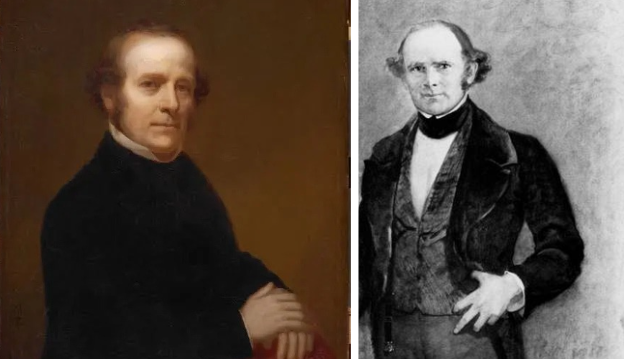Horace Wells is remembered as a groundbreaking American dentist who forever changed the field of medicine with his discovery of anesthesia. His work in the mid-19th century brought relief to countless patients who previously faced painful procedures without sedation. Though his life was marked by both triumph and tragedy, his legacy continues to inspire the world of dentistry and surgery.
Quick Bio
| Quick Bio of Horace Wells | |
|---|---|
| Full Name | Horace Wells |
| Date of Birth | January 21, 1815 |
| Place of Birth | Hartford, Vermont, USA |
| Nationality | American |
| Profession | Dentist, Pioneer of Anesthesia |
| Known For | Introducing Nitrous Oxide as Anesthesia |
| Major Contribution | Pain-free Surgery and Dentistry |
| Date of Death | January 24, 1848 |
| Place of Death | New York City, USA |
| Legacy | Regarded as a Founder of Modern Anesthesia |
Early Life and Background
Horace Wells was born in Vermont in 1815, a time when medical practices were still primitive, and dental care was often dreaded due to unbearable pain. Growing up in rural New England, Wells was a curious and hardworking child. He pursued an education in dentistry at a time when formal dental schools were rare, training under established practitioners before eventually opening his own practice. His early experiences shaped his determination to make dentistry not only more effective but also more humane.
Career Beginnings as a Dentist

In the 1830s, Wells moved to Hartford, Connecticut, where he opened a dental practice. His reputation grew quickly because he combined skillful technique with compassion for patients. However, dental treatment in his era remained excruciating. Patients endured extractions and fillings without pain relief, often resorting to alcohol or biting down on wood to withstand the agony. Wells was deeply troubled by the suffering he witnessed, and this drove him to search for a method that would eliminate pain from dentistry.
Discovery of Nitrous Oxide as Anesthetic
The turning point in Horace Wells’ life came in 1844. He attended a public demonstration of nitrous oxide, also called laughing gas, which was often used for entertainment at traveling shows. Wells noticed that a man under its influence injured himself yet felt no pain. Inspired, Wells experimented on himself by having a colleague extract one of his own teeth while he inhaled nitrous oxide. To his amazement, he felt no pain. This discovery would lay the foundation for modern anesthesia and revolutionize both dentistry and surgery.
Public Demonstration and Reception

Encouraged by his success, Wells arranged a public demonstration at Massachusetts General Hospital in Boston in 1845. Unfortunately, the experiment did not go smoothly. The patient appeared to cry out during the procedure, leading the audience to dismiss Wells’ claims and ridicule his method. Despite this setback, Wells firmly believed in the power of nitrous oxide and continued promoting its benefits. Later, others like William T.G. Morton and Charles Jackson would build upon his work, but Wells’ role as a pioneer was undeniable.
Struggles for Recognition
Though he was the first to successfully use nitrous oxide for dental anesthesia, Wells struggled to gain credit for his discovery. Figures like Morton and Jackson later received more widespread acknowledgment, sparking debates over who truly deserved the title of “discoverer of anesthesia.” Wells’ unfortunate failed demonstration further complicated his legacy. Despite these struggles, his early innovation proved that pain could be controlled during medical and dental procedures—a fact that changed medicine forever.
Tragic Decline and Death
In the later years of his life, Wells experienced emotional turmoil. He experimented with other chemicals such as chloroform, which affected his health and judgment. By 1848, while in New York City, he fell into a period of mental instability. Arrested after an incident during a chloroform-induced breakdown, he tragically ended his life in jail at the age of 33. His premature death was a heartbreaking conclusion to a life dedicated to easing human suffering.
Contributions to Dentistry and Medicine
Despite his tragic end, the contributions of Horace Wells remain monumental. He was among the first to prove that anesthesia could safely eliminate pain in medical procedures. His discovery opened the door for more advanced forms of anesthesia like ether and chloroform, which soon became standard in surgeries. Today, nitrous oxide is still widely used in dentistry and medicine, particularly for procedures requiring mild sedation.
Influence on Modern Anesthesia
Wells’ pioneering work laid the foundation for the field of anesthesiology, now an essential medical specialty. Modern anesthesia techniques—ranging from local to general anesthesia—are built upon the principles Wells demonstrated in 1844. His insight that gases could suppress pain without harming patients was revolutionary, and it reshaped surgical practices around the world.
Legacy and Honors
In the years after his death, the medical community slowly recognized Horace Wells’ achievements. In 1864, the American Dental Association officially acknowledged him as the discoverer of anesthesia. Monuments, plaques, and memorials dedicated to him can be found in Hartford and other places. Today, he is celebrated not only as a pioneer in dentistry but also as a figure whose vision helped shape modern medicine.
Historical Context of Dentistry and Medicine in the 1800s
To appreciate Wells’ impact, it’s important to understand the state of medicine in the early 19th century. Surgeries and dental extractions were often brutal experiences. Without effective anesthesia, patients faced shock, trauma, and sometimes death from the stress of pain. Physicians sought ways to ease suffering, but most attempts—such as alcohol, opium, or herbal remedies—were unreliable. Against this backdrop, Wells’ discovery was nothing short of revolutionary.
Horace Wells’ Place in Dental History
In the history of dentistry, Wells holds a central place. Before him, dentistry was feared, often avoided until absolutely necessary. His innovation not only improved the patient experience but also elevated the reputation of dentistry as a profession. Today, he is remembered alongside other great pioneers who advanced dental science into the modern era.
Interesting Facts About Horace Wells
- Wells once experimented on himself by having a tooth extracted under nitrous oxide, proving its effectiveness.
- His rival, William Morton, later became more famous for using ether, though Wells’ discovery came first.
- He died tragically young, at just 33 years old, after a mental health crisis.
- In 1864, years after his death, he finally received recognition for his work.
- Monuments in Hartford and Paris honor him as a founder of anesthesia.
Conclusion
The story of Horace Wells is both inspiring and tragic. He was a visionary American dentist who introduced the idea that medical and dental procedures did not have to be painful. Though his life ended in hardship, his discovery of nitrous oxide anesthesia transformed medicine forever. Today, every patient who undergoes a pain-free procedure owes something to Wells’ courage, determination, and compassion. His name stands proudly among the most important figures in the history of healthcare.
FAQs
Who was Horace Wells?
Horace Wells was an American dentist who pioneered the use of nitrous oxide as anesthesia in the 1840s.
What is Horace Wells known for?
He is best known for introducing nitrous oxide, also called laughing gas, as a safe and effective anesthetic.
Where was Horace Wells born?
He was born in Hartford, Vermont, on January 21, 1815.
How did Horace Wells die?
He died tragically in New York City in 1848, at the age of 33, after a period of mental instability.
Why is Horace Wells important in dentistry?
He made dental care humane by proving that pain could be controlled with anesthesia, revolutionizing the field.
For More Latest Update oneuppress

